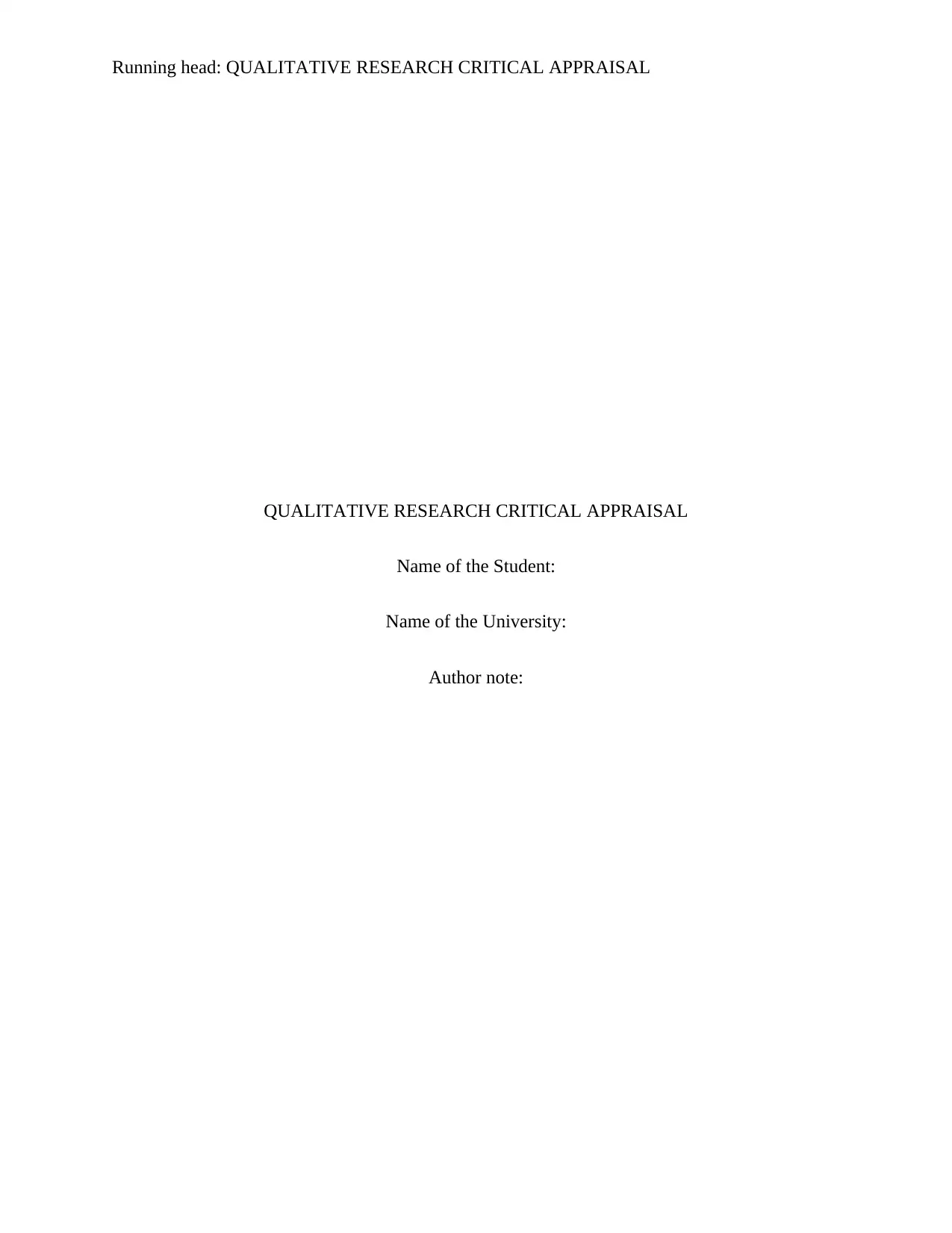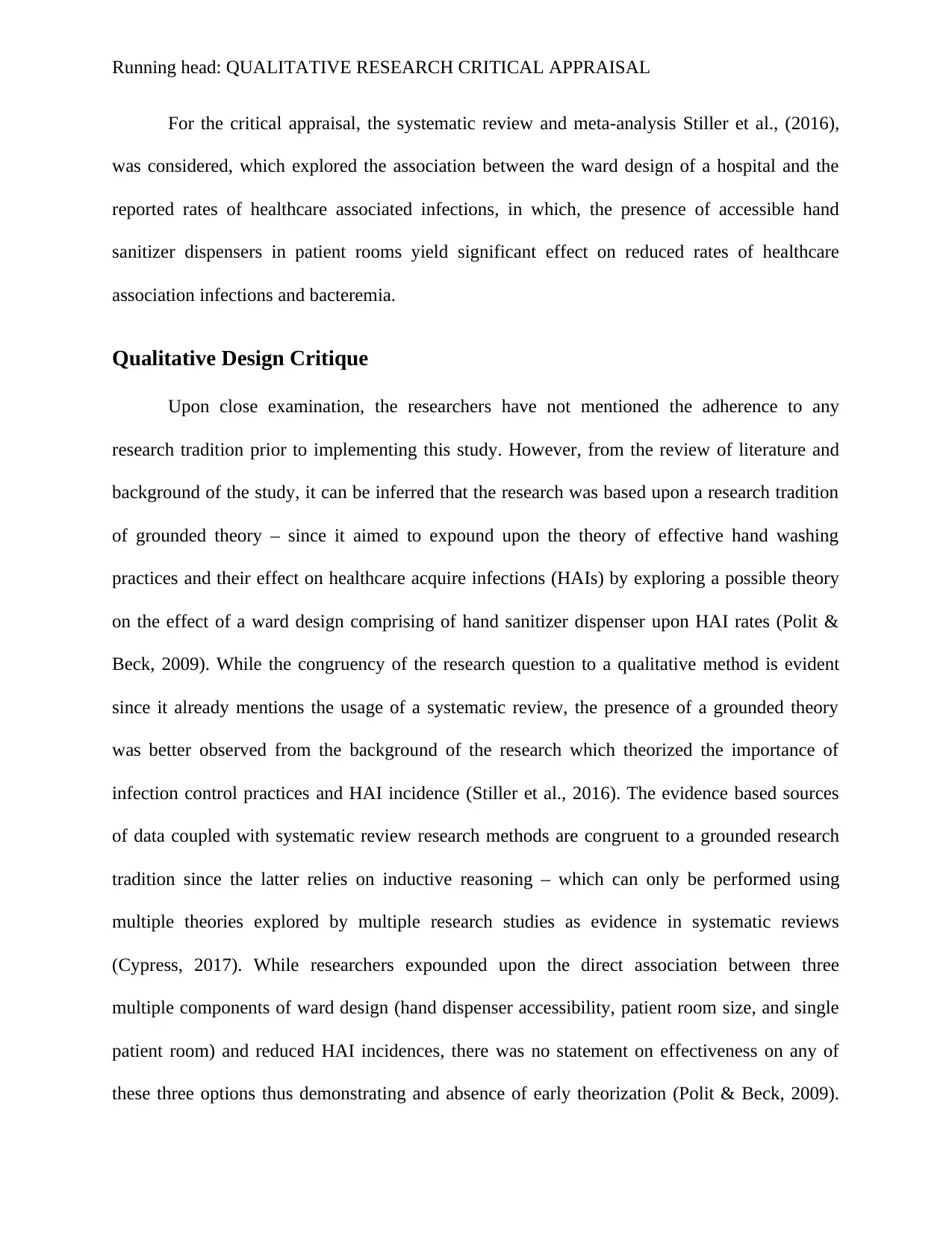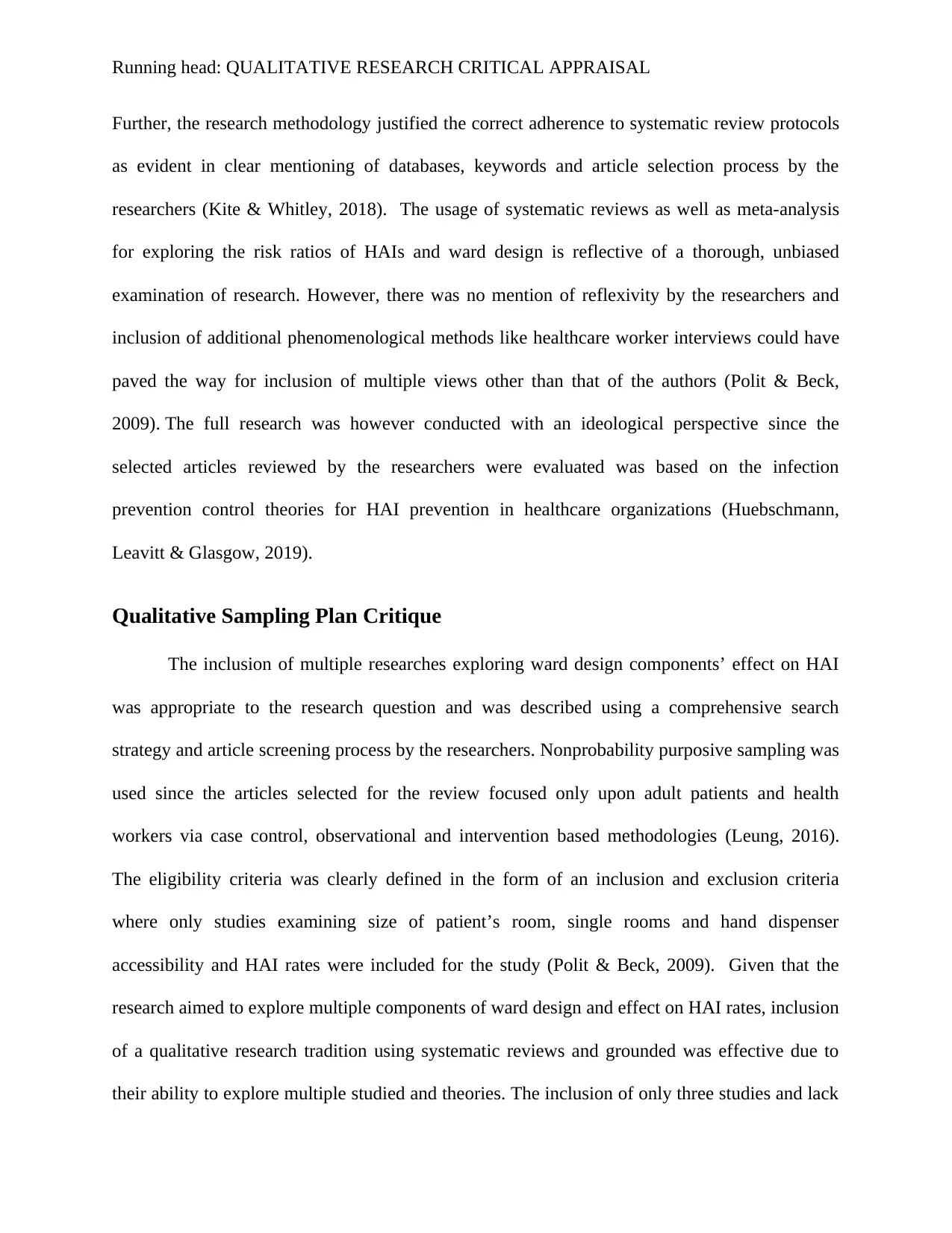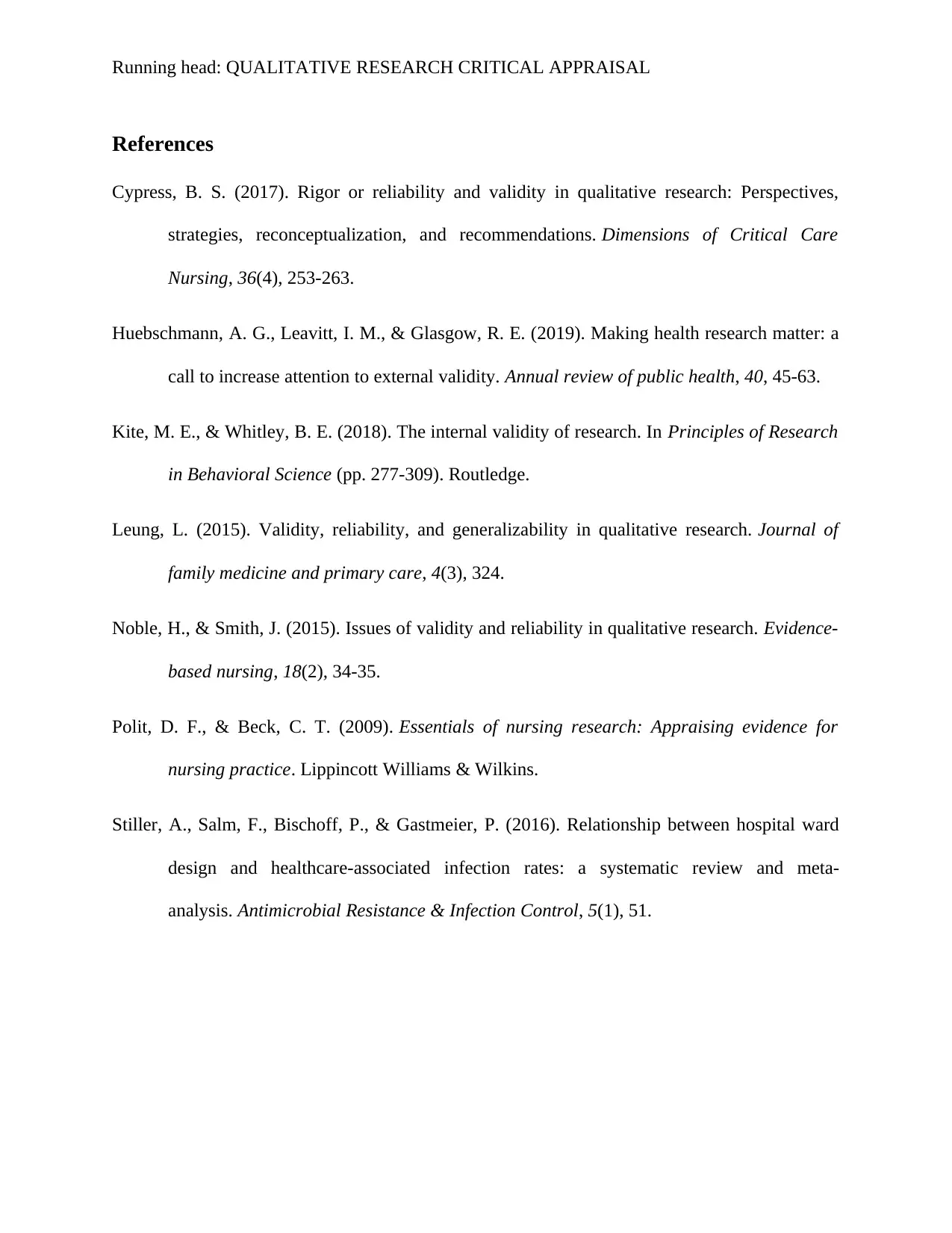Qualitative Research Critique: Healthcare Research Analysis
VerifiedAdded on 2022/09/11
|5
|1014
|16
Report
AI Summary
This report presents a critical appraisal of a qualitative research article exploring the relationship between hospital ward design and healthcare-associated infection (HAI) rates, specifically focusing on the impact of accessible hand sanitizer dispensers. The analysis, based on a systematic review and meta-analysis, examines the research design, sampling plan, and data collection methods. The report identifies the inferred grounded theory approach, assesses the congruency of the research question with the qualitative method, and evaluates the data sources and research methods. It critiques the description of the research design, reflexivity, and ideological perspective. The sampling plan is evaluated for its appropriateness, the use of nonprobability purposive sampling, and the defined eligibility criteria. The report also discusses limitations, such as the lack of data saturation and the absence of participant baseline characteristics. References to relevant literature are included to support the analysis.
1 out of 5






![[object Object]](/_next/static/media/star-bottom.7253800d.svg)